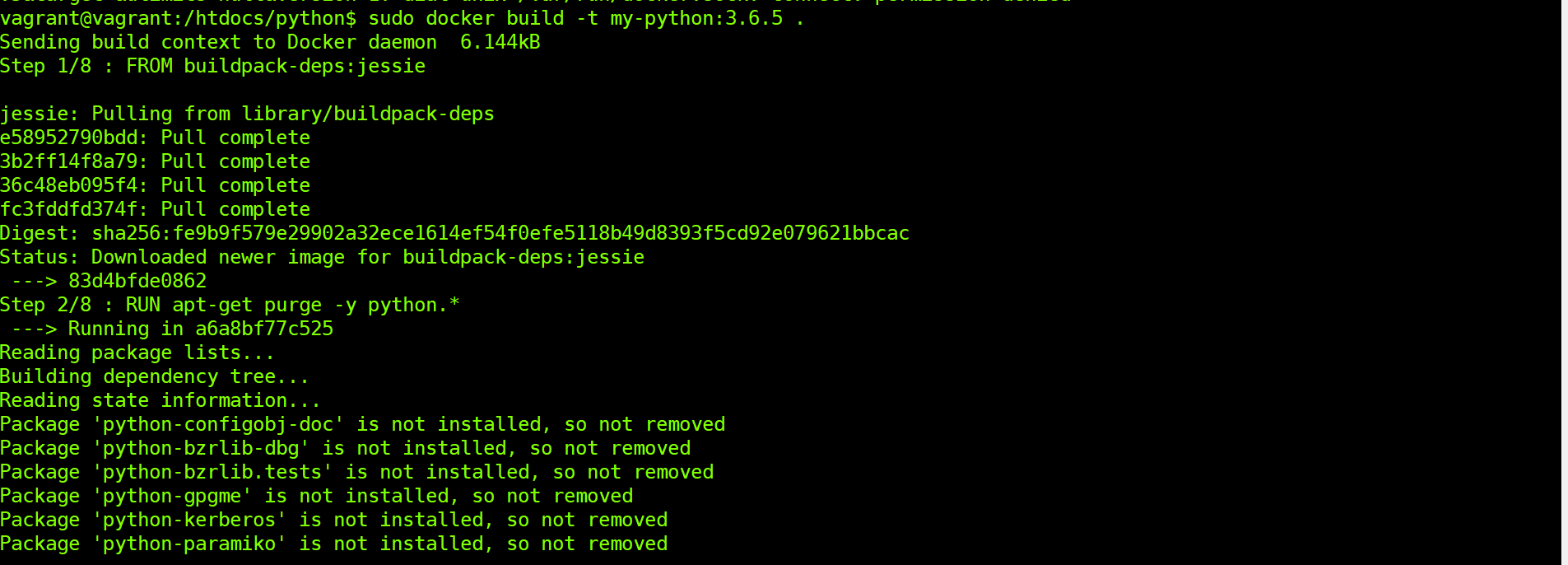Python is an interpreted, object-oriented, and dynamic data type high-level programming language. Getting started is simple and easy to learn. Python There are two ways to install Docker.
Let's take the current latest version 3.6.5 installation as an example to install:
Find the python image on Docker Hub:

See the latest version 3.6
Pull the official image, the label is 3.6.5:

It can be seen that the image has a size of more than 900M.
Enter the created python directory, create Dockerfile
FROM buildpack-deps:jessie
# Delete the old python
RUN apt-get purge -y python.*
# Use UTF-8 encoding
ENV LANG C.UTF-8
ENV PYTHON_VERSION 3.6.5
# if this is called "PIP_VERSION", pip explodes with "ValueError: invalid truth value '<VERSION>'"
ENV PYTHON_PIP_VERSION 10.0.1
RUN set -ex \
&& curl -fSL "https://www.python.org/ftp/python/${PYTHON_VERSION%%[a-z]*}/Python-$PYTHON_VERSION.tar.xz" -o python.tar.xz \
&& mkdir -p /usr/src/python \
&& tar -xJC /usr/src/python --strip-components=1 -f python.tar.xz \
&& rm python.tar.xz \
\
&& cd /usr/src/python \
&& ./configure --enable-shared --enable-unicode=ucs4 \
&& make -j$(nproc) \
&& make install \
&& ldconfig \
&& pip3 install --no-cache-dir --upgrade --ignore-installed pip==$PYTHON_PIP_VERSION \
&& find /usr/local -depth \
\( \
\( -type d -a -name test -o -name tests \) \
-The \
\( -type f -a -name '*.pyc' -o -name '*.pyo' \) \
\) -exec rm -rf '{}' + \
&& rm -rf /usr/src/python ~/.cache
# make some useful symlinks that are expected to exist
RUN cd /usr/local/bin \
&& ln -s easy_install-3.5 easy_install \
&& ln -s idle3 idle \
&& ln -s pydoc3 pydoc \
&& ln -s python3 python \
&& ln -s python3-config python-config
CMD ["python3"]
By Dockerfile creating a mirror my-python:3.6.5:

After the build is complete, you can find the newly created mirror in the local mirror list

/python/myapp Create a new file in the directory hello.py and enter the following:
Then execute the file:

Command description:
-
-v $PWD/myapp:/htdocs/pythonmyappMount the current directory in the host to /htdocs/python of the container -
-w htdocs/pythonSpecify the
htdocs/python/myappdirectory of the container as the working directory -
python3 hello.pyUse container
python3commands to executehello.pyfiles in the working directory